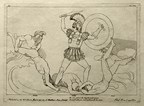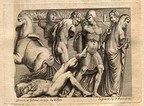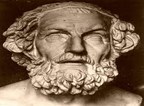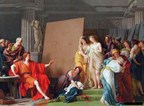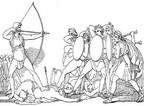Doubtless, the Iliad is one of the masterpieces of the global poetry. That’s why even the greatest poets of the world express the respect and the admiration for this ambitious poem and the virtuosity of its author. The Iliad is a set of fascinating pictures, with the richness of the exciting fantasy, the seriousness of the divine inspiration and the timeless ideals. The heroes are presented as eternal symbols of the continuous fight and the intense passions. The synthesis of the Iliad was based on the oral poetry of the previous centuries.
Main features of the Iliad
The epic heroes are real people, who love their country, brave, respectful, and sometimes impetuous, self-interested and extremely ambitious. They love the glory, the wealth and the delights of life. Each one of them has a particular personality and a specific feature. Also, very important is the religious feature in the poem as the gods intervene in the dissensions of the heroes.
The Iliad, the Trojan War and the myth
The Trojan War myth is complicated (as the most of the Greek myths) and describes the adventures of the mythic Greek heroes in the Trojan War which is claimed that took part in the 13th century BC. Many scientists believed that the town of Troy was a myth until was discovered by the Heinrich Schliemann in 1868.
The Olympic god Zeus understood that the people’s number grew a lot and decided to create the Trojan War to dilute the population. So, he compelled a demigoddess Nereid to get married with a mortal man Peleus. In this marriage were invited all the gods except Eris (in Greek ‘’eris’’ means brawl). To revenge Zeus, Eris left in the wedding ceremony a golden apple with the sign ‘’for the most beautiful goddess’’. Athena, Hera and Aphrodite quarreled for the apple and finally asked a handsome young man named Paris, the son of the king of Troy Priam, to give the apple to the most beautiful goddess. Hector decided to give the apple to Aphrodite and she promised to give him Helen the wife of Menelaus, the most beautiful woman of the world to get married for her.
After the Helen’s abduction, the Greeks supported Menelaus to start war with the Trojans to take back Helen and to destroy Troy. Agamemnon, the king of Mycenae defined as general of the army. The first Greek, Protessilaus, who disembarked at the Trojan coast, was killed by Hector, the head of the Trojans. Although, the Greeks, camped and fought there for the next 10 years. The last part of this war is described in the Homeric Iliad.
Achilles, the bravest man of the Greek army, was outraged because Agamemnon stole one of his slaves. So, he decided to leave the war with his men, the Myrmidons, causing the weakening of the Greek army. After a lot of Trojans’ succeeds, Patroclus, the best friend of Achilles, asked him to take part again in the war with the Myrmidons’ help. Achilles accepted and gave to Patroclus his own armor made by the Olympic god Hephaestus. Patroclus got into the battle and the Trojans thinking was Achilles, were back down the Trojan walls. Hector decided to front himself Achilles who truly was Patroclus. During the battle, Hector broke the armor of Patroclus and realizing who was, killed him and took his armor, a very offensive act for the dead.
When Achilles knew about the death of his best friend, decided to take revenge. He pleased his mother, Thetis, to ask Hephaestus to make a new armor, made up with Agamemnon and got into the battle. He dueled with Hector and achieved to kill him. Then he dragged the dead body behind his chariot to desecrate it. The Iliad ends with the Patroclus’ burial and the visit of Priam to Achilles to beg him to take back the body of his son.
The myth ends with the death of Achilles by Paris and the construction of the ‘’Trojan Horse’’ by the Greeks which helped them to defeat the Trojans and destroy Troy. The Trojan Horse was a huge, wooden horse in which were hiding the Greeks. Trojans thinking was a gift from the Greeks left the Horse to get into the town. During the night, the Greeks got out and destroyed the town.
The plot of the rhapsodies
Α: Plague and the Achilles’ rage
Β: The visit of the dream and the ship catalogue
Γ: Oaths, Alexander’s and Menelaus’ duel
Δ: Agamemnon sees over the army before the battle
Ε: The achievements of Diomedes
Z: Conversation between Hector and Andromache
H: The burial of the dead men
Θ: The darkness is interrupting the battle, without winner
I: Trojans send embassy to Achilles
K: The Dolon’s episode
Λ: The Agamemnon’s achievements
Μ: Battle around the Achaean walls
N: Battleships
Ξ: The Zeus’ cheat
O: Battleship
Π: The death and the achievements of Patroclus
P: Menelaus’ achievements
Σ: Construction of the new armor of Achilles
T: Again friendship between Achilles and Agamemnon
Y: The gods take part into the battle
Φ: Battle near the Scamander’s river
X: The Hector’s death
Ψ: Sport games for the honor of Patroclus
Ω: Ransoms for the body of Hector
